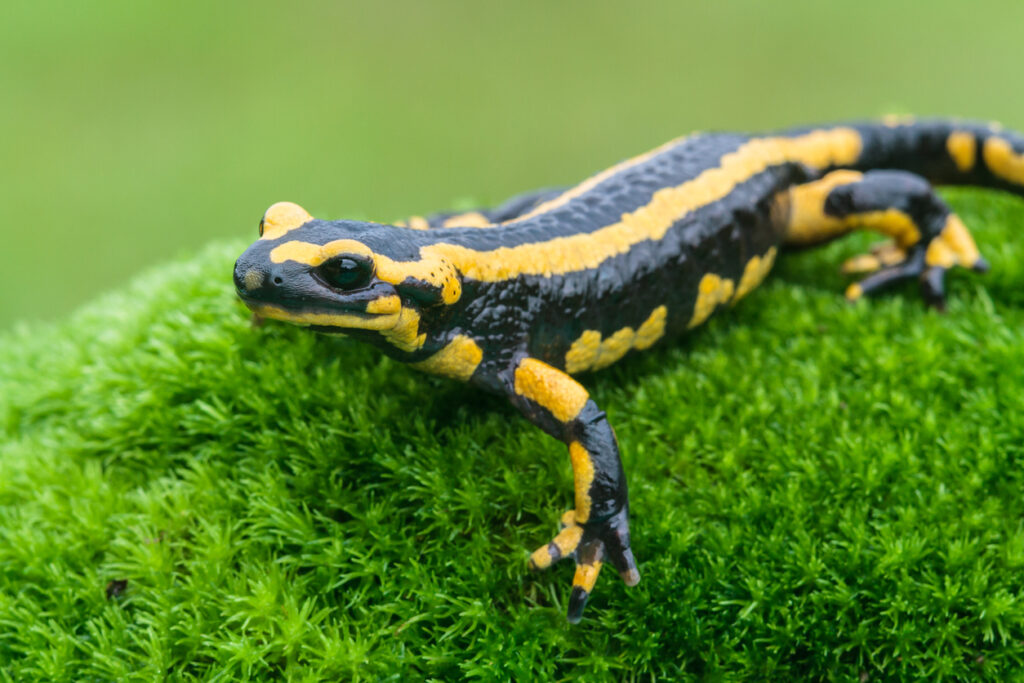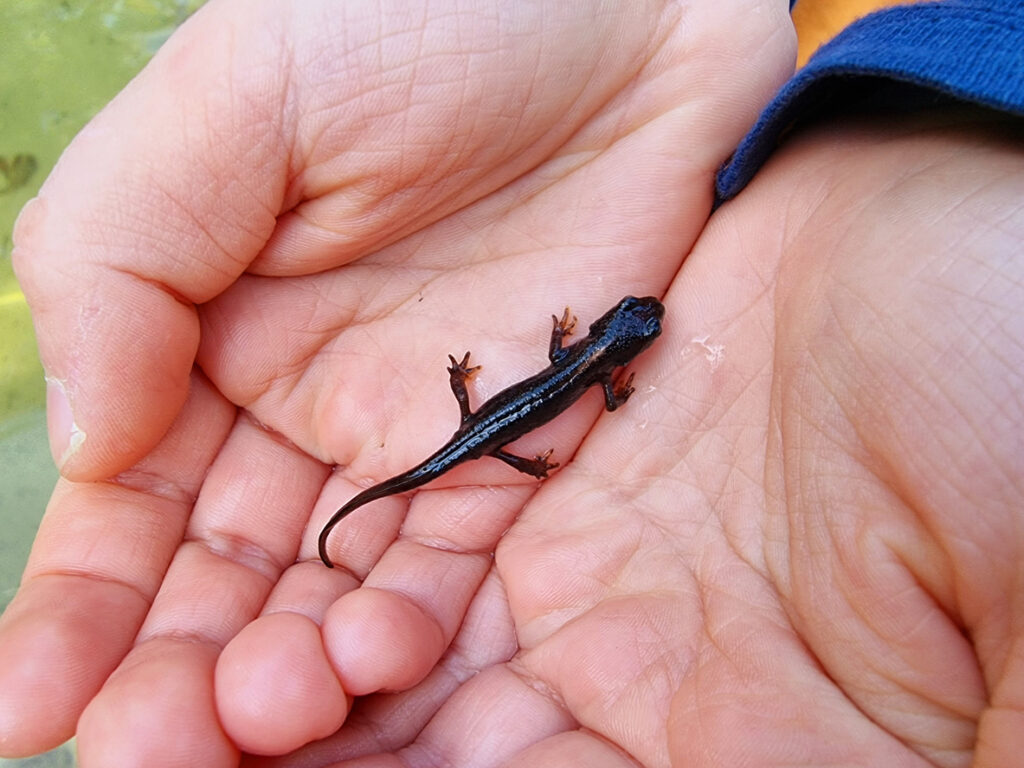Despite being classified in the same animal class, there are huge variations between different species of amphibians. An interesting example of how two similar-looking animals can have so much variation are newts and salamanders.
In this blog, we will delve into the distinctive features that set these two groups apart, examining their appearance, diet, habitat, lifecycle, and lifespan.
What is a Newt?
Newts (Pleurodelinae) fall within the classification of amphibians, sharing this status with salamanders. One notable trait of newts is their nocturnal nature, preferring the cover of darkness for their activities. It’s important to note that all newts are, in fact, salamanders, but not all salamanders are newts— something we’ll explore more later.
What is a Salamander?
Similarly classified as amphibians, salamanders (Caudata) encompass a broader group that includes newts. Unlike newts, all salamanders are not strictly nocturnal, exhibiting a wider range of activity patterns. Axolotls, fascinating creatures with regenerative capabilities, also fall under the salamander classification.

Main Differences in Newts’ and Salamander’s Appearance
Feet, tail, and size are key factors distinguishing newts from other salamanders. Newts typically sport webbed feet, ideal for efficient swimming. Their tails are flattened and muscular, helping them to produce power to propel through water. In terms of size, newts are generally smaller compared to other members of the salamander family.
Salamanders, on the other hand, often have longer tails and feet with developed digits adapted for walking, climbing, and digging. This structural difference highlights the diverse ecological niches that salamanders occupy, showcasing their ability to adapt to various environments.
Newt vs Salamander Diet
Understanding the dietary habits of newts and salamanders unveils more differences in their lifestyles. Both groups are carnivorous, preying on insects, worms, and other small invertebrates. However, their hunting strategies vary.
Salamanders, with their developed limbs and agility, actively pursue prey on land. Their elongated tongues shoot out to capture unsuspecting insects, demonstrating an impressive combination of speed and precision. Newts, being adept swimmers, use their webbed feet to navigate underwater and snatch prey while they swim.
The frequency of feeding also differs. Salamanders generally have a more voracious appetite, requiring regular meals to sustain their active lifestyles. Newts, being smaller and more energy-efficient, may not need to feed as frequently.
Habitat of Newts and Salamanders
Both newts and salamanders can be found in a variety of habitats, emphasising their adaptability. However, specific preferences may exist.

Newts often gravitate towards aquatic environments, favouring ponds, lakes, and slow-moving streams. They are particularly drawn to areas with abundant vegetation, providing hiding spots and breeding grounds.
Salamanders, with their diverse range, occupy terrestrial as well as aquatic habitats. Some species prefer damp woodlands, while others thrive in burrows or under rocks. This flexibility in habitat selection contributes to the wide distribution of salamanders across different ecosystems.
Lifecycle of Newts and Salamanders
The lifecycle of newts and salamanders follows a general amphibian pattern, beginning with eggs laid in water. However, the specifics can vary between species.
Newts typically lay eggs individually or in small clusters, attaching them to submerged vegetation. Upon hatching, larvae emerge, resembling miniature adults but lacking certain developed features. Over time, these larvae undergo metamorphosis, transforming into fully formed newts.
Salamanders may exhibit similar egg-laying habits, but their larvae often have distinct characteristics. Some salamanders skip the aquatic larval stage entirely, hatching as miniature versions of adults. This divergence in their developmental processes adds another layer to the intricate world of amphibians.
What are Newts’ and Salamander’s Lifespan?
The lifespan of newts and salamanders can vary significantly based on species and environmental factors. On average, these amphibians typically live between 5 to 20 years. Newts, being smaller in size, might have shorter lifespans compared to some larger salamander species.
In conclusion, while newts and salamanders share the common umbrella of amphibians, their differences in appearance, diet, habitat, lifecycle, and lifespan paint a vivid picture of the diversity within this captivating group of creatures.
As stewards of our environment, appreciating the nuances between these species is crucial for their conservation and the preservation of our ecosystems. You can see how Deep Sea World plays a part in the conversation of these animals by booking tickets now.
